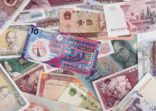India, Brazil, Indonesia, Turkey and South Africa — dubbed the Fragile Five due to large current account deficits — were the worst hit markets in 2013 after the US Federal Reserve announced plans to taper its stimulus programme. Foreign capital pulled out, market volatility spiked and currencies plunged.
“The volatility has massively decreased since [Raghuram] Rajan took over [as the Reserve Bank of India governor] and now the currency is much more stable against the US dollar,” Jauer said.
“We believe the Indian rupee could be one of the very few currencies to outperform the dollar in 2015. We strongly believe that the rupee will continue to appreciate against the euro, yen and against most of the emerging market currencies.”
Currently, the rupee is at 62.98 against the US dollar. Jauer said there is a strong potential for the Indian rupee to go back to 59 against the US dollar, depending on foreign capital inflows this year.
The state budget has measures that should promote foreign investment, such as reduction of the corporate tax rate, more infrastructure spending and measures to curb corruption, he added.
Reforms are underway. Last week, the government carried out a long-awaited reform by lifting the ceiling on foreign direct investment in Indian insurance companies to 49% from 26%.
















